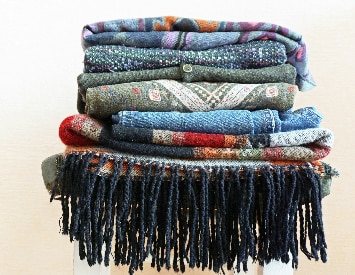Instrument Valves and Accessories
Instrument Valves and Accessories are a critical part of any Instrument Hook Up. The valves and accessories include those listed below.
Go to Specific Subject: Common Questions Associated with Instrument Valves and Accessories | Instrument Ball Valves | Instrument Bleed Valves | Instrument Check Valves | Close Coupled Mono flange and Large Bore Direct Mount Manifold | Primary Isolation Double Block and Bleed Valves | Instrument Excess Flow Valves | Instrument Gauge Valve | Instrument Hand and Gauge Valves | Micron Filters | Instrument Needle Valves | Instrument Relief Valves | Instrument Root Valves| Instrument Toggle Valves | Instrument Tubing Saddles |
Common Questions Associated with Instrument Valves and Accessories
What materials are used and why?
The materials generally used in producing a suitable alloy are Carbon, Silicon, Manganese, Chromium, Molybdenum, Nickel and Copper in different proportions to create different mechanical properties, such as tensile strength, depending on the conditions in which they are to be placed. That is, for example, whether the environment is corrosive, hot, wet or changeable etc.
What does NPTF thread stand for?
NPT thread stands for National Pipe Taper. It refers to the thread that tapers inward to create a better seal. It is recommended that care is taken in regards to the thread tolerances and only the best quality units are purchased to achieve this. It is imperative that any manufacturer has demonstrated quality assurance to a high standard. It is worthwhile ensuring the quality of threads by gauging at least a proportion of the threads to ensure compliance. Also it is recommended that thread tolerances and gauging should be specified to a tolerance better than the requirements of ASME B1.20.1. ICEweb's compression fittings page has a more detailed explanation of the gauging and tolerance requirements.
What does ASTM/UNS stand for?
ASTM stands for American Society for Testing and Materials.
UNS stands for Universal Numbering System.
What is an OS&Y valve?
An OS&Y valve is an Outside Screw and Yoke valve. It is a part of the piping specification. It has a firesafe outside screw construction.
Why is the Molybdenum content of 316SS 2% minimum in an offshore environment?
The molybdenum content is at a minimum 2% to prevent chloride corrosion.
Why is 303 or 304SS not to be used in an offshore environment?
303 or 304SS is not to be used because their molybdenum content is nil and thus the material is subjected to chloride corrosion.
Is there a maintenance issue when Close Coupled Monoflanges are used?
If the Monoflange is installed on a clean, non blocking process then it is not an issue in that access to the tapping point is required very rarely. This is especially so on Fieldbus and HART systems as the transmitter provides a huge amount of diagnostics on-line. The huge advantage of Close Coupling is that many instrument fittings are no longer required, thus eliminating potential leak failure points.
Instrument Ball Valves
General Purpose Ball Valves at a Glance - Ball valves provide a wide range of capabilities for various applications. Select a ball or trunnion valve for simple operation, visual indication of flow, full porting for maximum flow, rodability and long cycle life.
- Choose a 2-way ball valve for quick, quarter-turn, on - off service.
- A 3-way ball valve employs 180° operation for diverting flow from one line to another.
- 4-way valves are dual switching valves, changing two flow paths at the same time. 5-way, or diverter, valves allow flow through any of four possible paths.
High Cycle Ball Valves at a Glance - High Cycle ball valves are designed for repeatable, zero leakage sealing when control conditions demand valve actuation exceeding 50,000 cycles. Their unique stem- and seat designs provide packless-free operation and ease of maintenance.
Fire Safe Ball Valves - Fire Safe Valves meet demanding application requirements in the production environment of chemical and petrochemical processing facilities. These valves have been tested to and meet the requirements of API 607, 4th edition for soft seated valves. API 607 measures the ability of a closed soft-seated ball valve to retard the propagation of a fire (downstream and to atmosphere).
Instrument Bleed Valves
Instrument Bleed Valves - Bleed valves allow for quick, easy manual bleed-off of system pressure.
Instrument Check Valves
Instrument High Flow Poppet Check Valves - These Valves, recommended for severe service, including CNG applications have the following features, High Cv flow rates, Blowout-proof o-ring design, Ability to withstand high opening shocks without damage.
Close Coupled Mono flange and Large Bore Direct Mount Manifold
ICEweb's Monoflanges and Instrument Manifolds page has extensive technical engineering information on this subject.
Primary Isolation Double Block and Bleed Valves
Technical Reference on Primary Isolation Valves - This comprehensive Technical reference from Anderson and Greenwood gives excellent information on:
- Primary Isolation Valve - Primary Isolation Valve applications, advantages and disadvantages, features and benefits, Quarter Turn Ball Valve specifications, OS&Y Needle Type Globe Valve Specifications, HD Needle Type Globe Valve Specifications, along with a comparison with more traditional valve hookups.
- Double Block and Bleed Valves - These valves are integrally forged, one-piece double block and bleed assemblies for primary isolation of pressure take-offs, where the valve is directly mounted to the vessel or process pipe. Instruments may be directly mounted to the valve outlet or alternatively remotely mounted with gauge lines/impulse pipe work.
- Unique Series of Optional End Connections - This bulletin feature a unique series of really smart optional end connections which can be bolted onto the valve outlet in place of the standard 1/2-inch NPT female threaded connection. Bolt on connections are available as: Instrument Kidney Flange / Welded Connection / Dual Threaded Connection.
- Enhanced Locking Security of Instrument Valves - Ball valve locking handle provides additional security against tampering or accidental loosening as a result of vibration or physical damage. Allows the valve to be locked open or closed.
- Quill for chemical injection and sampling service - designed to ensure high pressure media can be injected into the optimum position of the flow stream through the process pipe work. It also enables clean product samples to be removed from the main flow. Includes details on Sour Gas Materials, Integral Check Valves and Low Temperature service versions.
- Monoflanges - also see ICEweb's Monoflange and Instrument Manifold page.
- Root Valves - An integrally forged one-piece block and bleed assembly for primary isolation of pressure take-offs, where the valve is either screwed or welded directly into the vessel or process pipe without the need for a flanged connection. Instruments may be directly mounted to the valve outlet or alternatively remotely mounted with gauge lines/impulse pipe work.
Instrument Excess Flow Valves
Excess Flow Valves - These valves act as flow switches that automatically close when a flow spike occurs, preventing uncontrolled release of system fluid. They are available in automatic and manual reset versions, depending on system requirements. Automatic reset versions can have an “anti-clog” wire which increases reliability by preventing a build up of system fluid in the bleed port. Others are high pressure (0 to 6000 psig [414 bar]), high performance, quick acting, zero leakage, low maintenance excess flow valves that will help provide a reliable and safe working environment.
Instrument Gauge Valves
Technical Reference On Gauge Valves - This comprehensive Technical reference from Prochem Pipeline products gives excellent information on:
- Bonnet Technology - Covering both soft and hard seat, mini bonnet assembly, arctic low temperature applications.
- Block and Bleed - Static pressure gauge and instrument installation for isolation and venting.
- Multi-Port Gauge Valves - These valves allow the versatile positioning of gauges or pressure switches without requiring additional penetration of the main piping.
- OS&Y Root Valves-Root Isolation Valves with Outside Screw and Yoke, Bolted Bonnet Construction - This is a multi-ported OS&Y root/primary instrument isolation valve, designed for use with gauge mountings and other pressure instruments in refineries and chemical plants. It facilitates installation of multiple measurement devices without additional penetrations of the main piping.
- Gauge Valve Accessories:
Bleed Tee - A Bleed Tee is a single male inlet, triple female outlet piping tee. It is generally used with the process root valve to simplify downstream piping and reduce the number of potential leak points. The Bleed Tee can be used with any 1/2-inch or 3/4-inch valve in an instrument piping system and allows either vertical or horizontal pressure gauge mounting. As an option, a bleed plug (as shown above) can be assembled into the tee to provide a means of relieving pressure for maintenance purposes.
Bleed Plug - The bleed plug provides an economic means to bleed process pressure trapped between the Valve and instrument. This bleeder valve vents to atmosphere and has bubble-tight shutoff.
Seat Resurfacing Tool - The flow of abrasive fluids may, over time, score the seating surface of the valve body. The seat resurfacing tool will re-machine this surface and allow the valve to once again deliver bubble-tight shutoff.
Bonnet Lock (patent protected) - The Bonnet Lock (BL) prevents accidental loosening of the bonnet-to-body seal, and is a low-cost alternative to a union bonnet. A high-strength short bonnet pin aligns a hex collar over the bonnet. A standard SS hollow-point set-screw or lock nut locks the collar against the bonnet. Tests indicate that the minimum torque required to break the collar loose is greater than the torque required to twist off the valve stem.
Gauge Adapters - Designed for use with any gauge valve to increase site versatility, the GA swivel gauge adapter allows positioning of pressure gauges in any direction through 360 degrees via a compression fitting.
Gauge Syphons - Designed to replace the old pigtail type of siphon, this accessory provides a thermal barrier between hot vapours and the pressure instrument. It reduces the amount of potential gauge whip on vibrating lines by bringing the gauge closer to the process connection.
Instrument Hand and Gauge Valves
Hand and Gauge Valves - These include multi-port and block and bleed styles suitable for gauge isolation, calibration and venting with a choice of either globe pattern or through-bore designs. A wide choice of end connections and comprehensive range of standard gauge accessories allows complete flexibility for individual installations - From Prochem Pipeline products.
Micron Filters
Micron Filters - With a Variety of Micron Filtering ranges from 2 to 55µ these units have applications such as trapping foreign particles, protecting sensitive equipment, system purging and acting as a pressure damper, see page 27.
Instrument Needle Valves
Needle Valves at a Glance - This technical bulletin covers a complete line of precision needle valves. Before making your valve selection, be sure to consider the system pressure, operating temperature, required flow and materials of construction. It also details the following:
- Design of Stem packing - Provides superior sealing performance while reducing maintenance costs. Consisting of alternate wafers of TFE and metal spacers, stem leakage is virtually eliminated while the problems associated with TFE cold flow are minimized.
- Choice of Stem Tip Options to Provide Greater Flexibility:
Blunt Vee-Point - The blunt vee-point stem tip provides full flow with only a few turns of the valve handle.
Vee-Point - The vee-point stem tip is used to provide leak-tight shutoff in small orifice valves.
Regulating - The regulating stem tip has a gradually tapered tip which allows for greater control of flow.
Non-rotating Metal Stem Tip - A non-rotating stem tip is typically used in high cycle applications to extend the service life of the valve. Its purpose is to prevent galling in the seat and on the stem tip. As the valve is closed, the stem tip contacts the valve seat, and is driven straight into it without rotating.
Vee-Point - The vee-point stem tip is used to provide leak-tight shutoff in small orifice valves.
PCTFE - A PCTFE stem tip requires a lower seating torque than a metal stem tip. It will provide full flow through the valve with only a few handle turns. The PCTFE tip is replaceable and has a maximum temperature of +250° F (+121° C).
Non-rotating PCTFE Stem Tip - A non-rotating PCTFE stem tip operates in the same fashion as the non-rotating metal stem tip but requires less seating torque.
- Flow capacity of HOKE Needle Valves - The Cv factor is a flow coefficient expressing the rate of flow in gallons per minute of 60° F (16° C) water with a pressure drop of 1 psi across the valve. The flow is dependent on the inlet and outlet pressures, temperature, specific gravity and the Cv coefficient. Both liquid and gas calculations are detailed.
- Severe Service Needle Valves - details on a valve for steam and other severe service applications.
- Sour Gas Service Needle Valves.
Instrument Relief Valves
Right Angle Instrument Relief Valves - These valves provide users with high accuracy and consistency of cracking and reseat pressures. Furthermore, narrow pressure ranges (cracking pressures) for each model can be factory pre-set according to customer specifications. PED certification and CE marking are standard for all models.
Instrument Root Valves
Root Valves - These valves are an integrally forged one-piece double block and bleed assembly for primary isolation of pressure take-offs where the valve is either screwed or welded directly into the vessel or process pipe without the need for a flanged connection. Instruments may be directly mounted to the valve outlet or alternatively remotely mounted with gauge lines/impulse pipe work.
Instrument Toggle Valves
Instrument Toggle Valves - Featuring a simple, reliable design concept, this low-maintenance valve is well suited for a wide variety of applications. The toggle handle provides easy on-off operation and visual indication of flow.
Instrument Tubing Saddles
Complete Tubing Control with Stainless Steel Saddles - Features 316 Marine Grade Stainless Steel, Weather and Corrosion resistant, 18g reinforced rib for added strength for sizes up to and including 12.7mm (1/2”) and Manufactured to precision tube tolerances.





